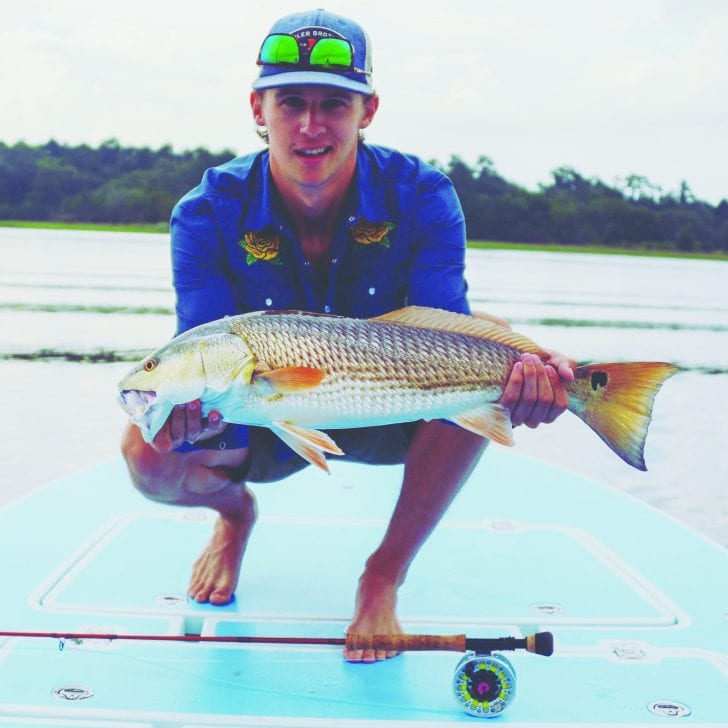It happens occasionally; the fish that will seemingly eat anything- quits. Although we all like the days where the strangest and gaudiest flies in the box work there are those days it takes a little patience and insight to get them to bite.
Here’s a few tricks to get over the slump.
First thing I would suggest would be to drastically change the color of the fly. Its obvious they aren’t eating so we’re looking for a more instinctual “triggered” bite.
Dark colors generally suited for stained and off color water work miracles when its clear. My first thought would be to offer the fish a fly that is realistic during time of clear water but its not always the case.
Flashy flies generally used in summer such as Randy Hamilton’s copperhead can also be deadly on lock-jawed reds to get the trigger.
Flies often reserved for bonefish get dusted off and put into service
If changing the color of my offering still does not get the redfish to bite, I will generally drop down to very small flies and a 12lb fluorocarbon leader.
Flies often reserved for bonefish get dusted off and put into service. The lighter fluorocarbon leader will allow the smaller flies to sink a bit faster.
Small lead eyed gotchas and even crazy charlies have produced redfish when the standard “go to” flies failed for us.
Lastly the retrieve should be addressed. Again, change is the key here. If you’ve been stripping erratically and shrimpy, try a long and very slow retrieve.
Many of the flies we use for redfish have either rabbit strips or marabou feathers, both of which breathe beautifully underwater.
Take advantage of this and let the flies materials provide the movement for you.
It will generally seem more natural to the fish (crabs don’t try to outrun redfish). Also its a good rule to not strip the flies towards spooky redfish so letting it set on the bottom would be a more natural presentation. Remember: Gazelles don’t run towards lions.
Its been a weird winter and a breezy spring, and things will get going full tilt soon. In the meantime you could paint the house, plant a garden, or get out on the water and improve your craft.
Get out of your comfort zone and experiment.
Scotty Davis – Lowcountry Fly Shop / Lowcountryflyshop.com
You may also enjoy reading America’s Fish



